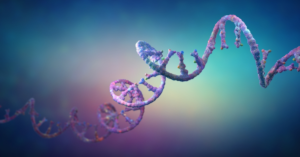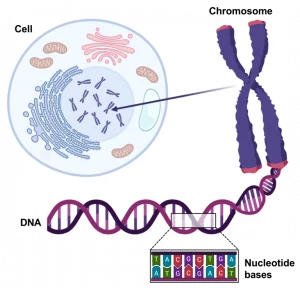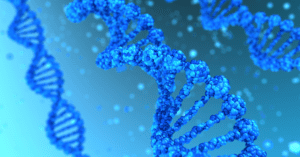
Snapshot: What is recessive ataxia?
What is a recessive disorder? A recessive disorder is one that has a specific disease mechanism. For a recessive disorder to occur, both copies of the causative gene must be Read More…
Support the Ataxia Research Drive before 12/31/2025 to fuel progress toward treatment development. DONATE NOW
A collection of resources for individuals and families affected by X-Linked Cerebellar Ataxias (XLCA).
X-Linked Cerebellar Ataxias (XLCA) are a group of ataxia disorders caused by genetic mutations on the X chromosome. XLCA leads to problems with balance and coordination, as well as other symptoms depending on the type of XLCA. For complete information about symptoms, diagnosis, and treatment of Ataxia, visit our What is Ataxia? page. This page contains NAF’s resources that are specific to XLCA.
This webpage is focused on rarer forms of XLCA. If you are looking for information on Fragile X-associated tremor/ataxia syndrome (FXTAS), please visit our FXTAS information page.
Sign up for our mailing list to stay up-to-date on Ataxia news.
Presented by Ginevra Zanni, MD, PhD and Enrico Bertini, MD
Experts joined us to take a look at the causes and symptoms of X-Linked Cerebellar Ataxia (XLCA), the typical diagnostic journey for those affected, what to expect for clinical care, and an overview of current research into these diseases. XLCA includes several different conditions, such as X-linked spinocerebellar ataxia, X-linked ataxia with spasticity, X-linked ataxia with deafness, X-linked ataxia with dementia, X-linked congenital ataxia, Oligophrenin-1 syndrome, CASK syndrome, Christianson syndrome, and X-linked adrenoleukodystrophy-ataxic variant.
NAF offers webinars on many topics to help you live better with Ataxia. Visit www.ataxia.org/webinars to find other helpful presentations.
Participating in a research study or clinical trial is one way to take an active role in furthering understanding and treatment of Ataxia. It is also a way to get access to new treatment options before they are widely available. To find studies that are enrolling patients, visit our Help Develop New Treatments page.
X-Linked Cerebellar Ataxias (XLCA) are a group of rare neurodegenerative disorders. There are many types of XLCA, with new forms of XLCA still being discovered. Each type of XLCA is caused by mutations in different genes. Some genes that cause XLCA have been identified, and others have not.
The frequency of XLCA disorders varies. Most are quite rare. However, some forms of XLCA are more common, such as FXTAS (1 in 8,000 people) and Rett syndrome (1 in 10,000 women).
Like many other forms of Ataxia, XLCA is marked by poor balance and coordination. In fact, the word Ataxia means incoordination. There can also be problems coordinating muscles that control speech and swallowing.
The other symptoms that someone with XLCA experiences depend on their specific ataxia type.
The prognosis for people with XLCA depends on their specific ataxia type. Many forms begin during childhood and progress over time. Treatments such as physiotherapy, occupational therapy, and speech-language therapy can also significantly improve the lives of people with XLCA. Depending on a person’s type of XLCA, there may also be symptomatic or disease-specific treatments available.
XLCA is a group of genetic disorders, which means that they are inherited diseases. Each type of XLCA is caused by mutations in different genes.
Genes are microscopic structures within the cells of our bodies that contain instructions for every feature a person inherits from his or her parents. The abnormal gene responsible for different forms of XLCA is passed along from generation to generation by unaffected family members who carry it. Sometimes, these mutations will also randomly develop in someone when they are conceived.
XLCA are X-linked disorders, meaning that the genes that cause these disorders are found on the X chromosome. Usually, women have two X chromosomes (XX) and men have one X and one Y chromosome. Due to this difference, X-linked disorders impact men and women differently.
Most forms of X-linked ataxia are recessive.
Men who carry the mutation for an X-linked recessive ataxia will develop that condition. This is because they only have one X chromosome, which is affected by the ataxia mutation. Men are more commonly impacted by X-linked recessive ataxia.
Women who have one copy of the mutation for an X-linked recessive ataxia will not usually develop the condition. This is because they have two X chromosomes, and the unaffected X chromosome can protect them from developing symptoms. People who have a mutation for an X-linked recessive ataxia without developing symptoms are called carriers. Depending on the type of XLCA, some carriers may also experience mild features of the disorder. If a woman has two copies of the mutation for an X-linked recessive ataxia, one on each X chromosome, then she will develop that condition.
The likelihood of passing on an X-linked recessive ataxia is complicated. It depends on the sex of the parent passing on the gene, and the sex of the child receiving the gene. You can learn more about X-linked recessive condition inheritance patterns through the NHS National Genomics Education Programme.
Only one copy of a mutation for an X-linked dominant ataxia is needed to develop the condition. Thus, both men and women can be affected by X-linked dominant ataxia, if they have one copy of the mutated gene. Since they only have one X chromosome, men tend to have more severe symptoms than women. Sometimes the symptoms are so severe, boys with X-linked dominant ataxia either die in utero or shortly after birth. Rett syndrome is one example of an X-linked dominant ataxia.
Gene tests can be performed for diagnostic purposes to determine what kind of Ataxia is within a person or family. Genetic testing can also be done, in some circumstances, even before there are symptoms to determine whether a person carries the abnormal gene or genes that cause Ataxia. This is called predictive or presymptomatic testing. A gene test can also be used to determine whether a fetus has an abnormal Ataxia gene. This is called prenatal testing. Anyone who is considering a predictive or prenatal test should consult with a genetic counselor to discuss the reasons for the test, the possible outcomes, and how those outcomes might affect the person emotionally, medically, or socially.
A neurologic examination can determine whether a person has symptoms typical of XLCA. A neurologist is often the most helpful specialist in recognizing symptoms and diagnosing the disease that causes Ataxia.
Providing a detailed family history is critical for accurately diagnosing X-linked conditions. There are several potential follow-up tests. MRI brain imaging may be used to confirm cerebellar atrophy. Metabolic testing may be used to rule out other forms of ataxia that have similar symptoms to XLCA. A definitive diagnosis of XLCA is established following genetic testing. This confirms that someone has a mutation that causes XLCA.
SCAsource provides Ataxia research news, directly from researchers to the Ataxia community. Visit SCAsource to see their full collection. Here is a collection of articles related to XLCA.

What is a recessive disorder? A recessive disorder is one that has a specific disease mechanism. For a recessive disorder to occur, both copies of the causative gene must be Read More…

A gene is the basic physical unitof heredity. Every living cell contains genetic information that determines an organism’s development, form, and function. This genetic information is encoded by two macromolecules: Read More…

Spasticity is a condition where muscles involuntarily stiffen, impeding normal smooth movements. Spasticity can present in varying severities with varying impacts on daily life. For example, minor spasticity resulting in Read More…

Augmentative and Alternative Communication (AAC) is an umbrella term that has many meanings. Simply put, AAC is every way we communicate other than speaking. At its core, AAC uses symbols. Read More…

Have you ever wondered what part of your nervous system is helping move the muscles of your body? Or your head? An important part of our central nervous system called Read More…

For healthy function, our body performs many essential cellular processes mediated by the molecules created within us. This construction is based on a molecule called DNA, which acts as an Read More…
